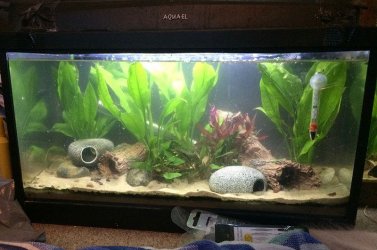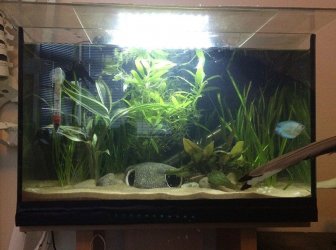chrisdenyer
Mostly New Member
Ok, well I will look into the aragonite. Could quite easily add some to existing set up depending on when I'd be able to actually get a larger tank...
and I will definitely get the blue rams out of there before I do that! Do you think they'd need to go in the 54L or would they be ok in the 45L? Bearing in mind that there is a dwarf gourami in the 54L...I suppose I could even put the DG in the 45L but then I'd have apistos and rams in the same tank which is not a good idea!
My nitrates are perfectly fine, all my tanks are planted for that reason and get 20% weekly water changes, they're consistently under 20 ppm (12.5 in the molly tank last time I checked)
just having a little look for coral/aragaonite sand...don't seem to see any specifically designed for freshwater, they all say marine or hard freshwater setup. what's actually the difference?
and I will definitely get the blue rams out of there before I do that! Do you think they'd need to go in the 54L or would they be ok in the 45L? Bearing in mind that there is a dwarf gourami in the 54L...I suppose I could even put the DG in the 45L but then I'd have apistos and rams in the same tank which is not a good idea!
My nitrates are perfectly fine, all my tanks are planted for that reason and get 20% weekly water changes, they're consistently under 20 ppm (12.5 in the molly tank last time I checked)
just having a little look for coral/aragaonite sand...don't seem to see any specifically designed for freshwater, they all say marine or hard freshwater setup. what's actually the difference?



